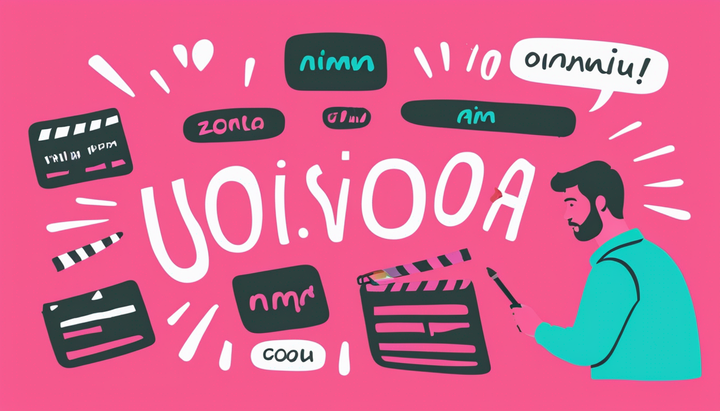How to Escape the Content Treadmill with a Smart Repurposing Strategy
Feeling stuck on the content treadmill? You're not alone. Repurposing can help you free up space, but you have to repurpose content the right way. Here's how.

Marketers have long felt the pressure of the Content Treadmill, a term used to describe the seemingly endless need to produce new content—and a state of being that makes it hard to think creatively or strategically.
It's a pretty vivid metaphor; after all, who wants to be stuck on a treadmill?
One common solution teams employ to fix this problem is content repurposing. We're true believers in repurposing; our own content strategy informed Repurpose Studio, a brand-new suite of AI features that help marketers turn long-form video into engaging social clips 10x faster.
But repurposing isn't a cure-all tonic to your content treadmill woes. Without a strategy, you'll quickly find yourself on the "repurposing treadmill" instead—and that's arguably worse.
So today, we're going to share how we use repurposing to hit output goals while staying off of the dreaded content treadmill.
How to escape the content treadmill with repurposing
1. Run to your content goals, don't walk
If we keep the treadmill metaphor, let's start with this: running on the treadmill is good for you. You don't actually want to get off the treadmill completely.
The real problem is being on the treadmill longer than you need to. You're busy and the world moves fast, so six-hour walks really aren't recommended—for your health or for marketing.
Repurposing can quickly devolve into the equivalent of a leisurely stroll, though. There's so much content to repurpose that the default trajectory of repurposing is to spend time on low-impact work. Fortunately, there are ways to stay on track.
Bet on a few platforms/formats to start
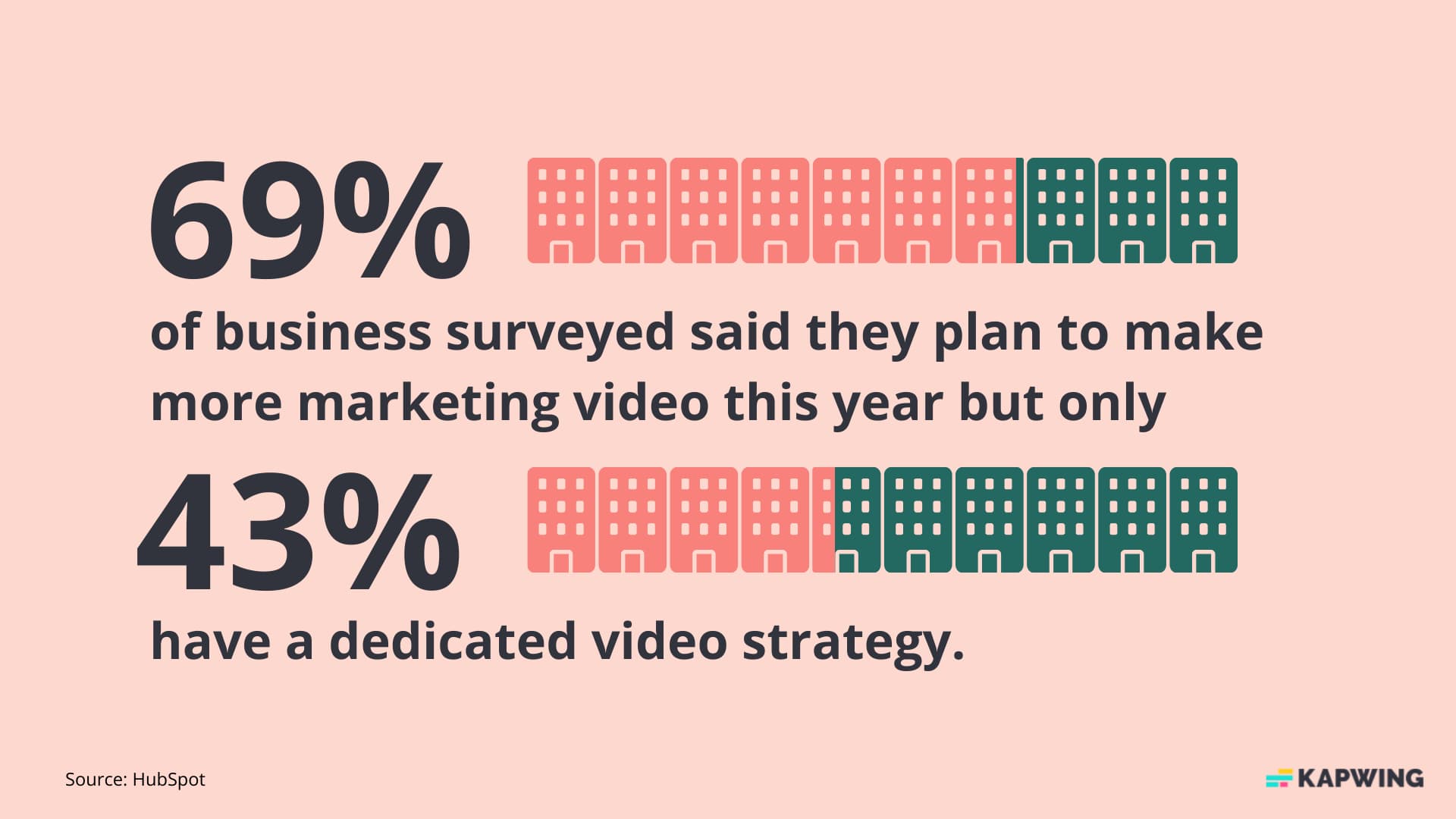
Form an opinion based on evidence about where you should spend most of your time reaching customers. At Kapwing, we've chosen our channels based on:
- Historical data. What channels have sent us best-fit customers in the past? Where can we attribute a meaningful number of qualified signups?
- Customer intel. What do active customers say about where they spend their time for work? Why do they choose these channels?
- Community insight. We join communities where our ideal customer hangs out. In those conversations, which platforms are people usually linking to?
When you're selling a business product like ours, the key insight is where active customers and best-fit prospects spend their time to get better at their jobs. Those are the places that have the most influence in how they approach their work, and what products they buy to get the job done. And that's where you should spend your time repurposing content.
Dial your investment up or down based on performance
Every channel or format you choose to repurpose to should re-earn its place in your content calendar. It's up to you to decide the timeframe you're willing to give a channel, but you will likely see clear trends (and winners) play out over time. Keep those formats and those channels; cut the rest.
One principle we follow is to ensure the content we're repurposing directly aligns with the goal we have for that channel. For example, we have very specific goals for our blog—so we don't republish content to the blog that's unlikely to support those goals, even if the content would be easy to repurpose.
That makes it far easier to decide when to repurpose video content, for example, into a blog post, and when to not waste the effort. And it keeps each channel focused on its specific goal rather than letting channels become a dumping ground for content assets.
2. Repurpose ideas over content
You've selected channels where you have evidence that customers and prospects spend time. You've also set goals for those channels and will regularly evaluate them based on those goals.
The next step to making repurposing work for you is to center your approach to repurposing key narratives and ideas rather than individual pieces of content. Yes, you'll ultimately end up with hands-on writing or video editing work in order to do this, but repurposing ideas is how you find focus for the messages you're getting out to the world through this content.
What this looks like in practice is a planning process that resembles a product launch but for a narrative or concept rather than a feature.
For example, we created a lot of educational and thought leadership content to support the launch of Repurpose Studio and other feature releases this year. But we've also taken this exact approach to cover concepts like "Dark Social," which we believe all modern marketers need to understand in order to be successful with video.
Our narrative: Dark Social describes a pattern of behavior that greatly influences how you should measure the impact of platform-native video content—that kind of content creates demand for your product rather than captures existing demand, so it must be measured in a distinct way.
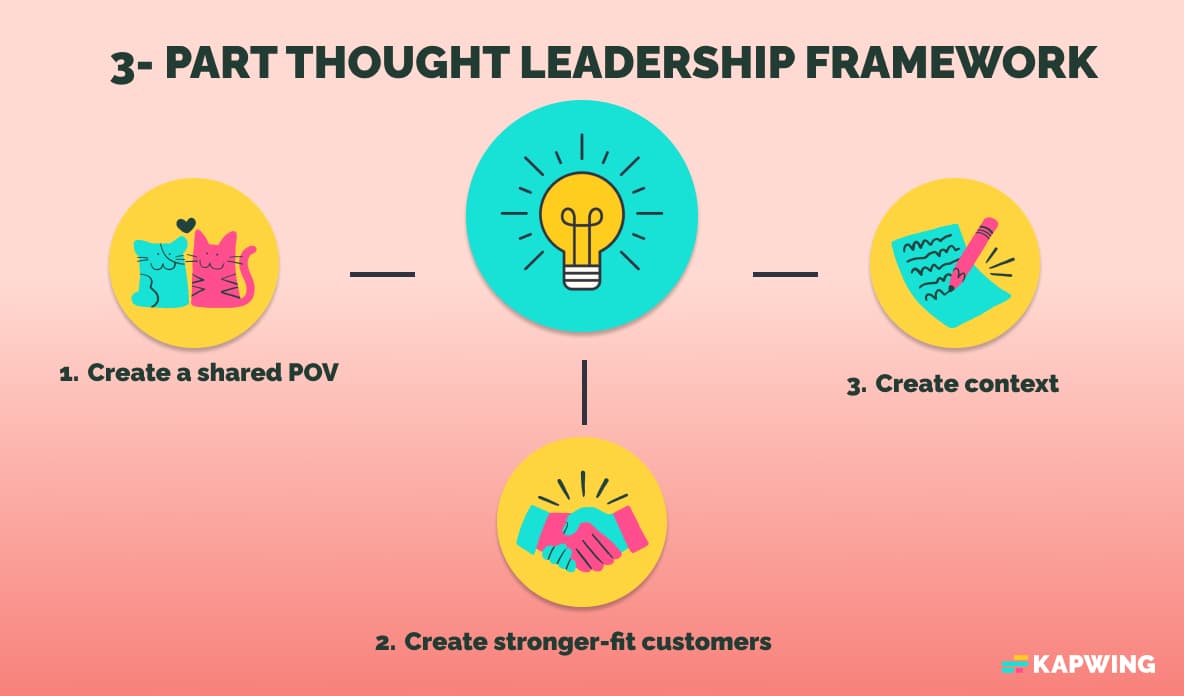
We built multiple content assets around this idea because it's something we believe will help our customers be more successful. In general, we have three principles for what makes a great narrative or idea to atomize content around:
- Strong narratives drive changes in behavior. The people who regularly read/watch our content should begin to form shared points of view with us that ultimately lead them to change their behavior—in a way that helps them succeed in their work.
- Strong narratives turn prospects into better customers. The change(s) in behavior we drive should, in turn, make members of our audience better-fit customers for our product. Customers who share our worldview have a sharp understanding of the problem we're solving and will see the value of our product.
- Strong narratives should capture the larger context. Our narratives should also help customers understand what's changing in the world which makes our viewpoints so important and relevant *right now*. Put simply, these are the stakes. What's at stake if they don't act; what evidence do we have that our point of view is really where things are headed?
Sounds like hard work, and it is. So why do all this?
The worst form of marketing success is earning a ton of eyeballs on a message that does nothing for the business. What good is that attention if nobody is influenced to check out the product?
Building a content repurposing program—and indeed, your entire content strategy—around core narratives ensures that if you are successful, you'll end up reaching people with messages that actually matter. That clip you repurposed from your podcast that wildly took off on Instagram? Great news: if you follow this approach, it will contain the message you want.
3. Map content sources to outlets
Content creation gets a lot easier when you identify a few "first contact" channels where you shape and share ideas first. We call these anchor mediums, or the content assets where you'll first distribute an idea and from which you pull most of your repurposed material.
We actually have three different buckets of anchor content that we use:
Long form to short form
The tried-and-true approach to repurposing is finding single-serve highlights from longer-form content and repackaging it for social. And hey, it works well! Having your best insights hidden away "somewhere around 23:00" in an hour-long webinar is no good—and this workflow helps solve that problem.
What you must decide as a team is which long-form formats you'll regularly draw from, and map the repurposing you'll do to a goal output. You can certainly add ad-hoc opportunities, such as long form content make for a product launch.
But your week-to-week should be planned with purpose:
- 1 podcast per week → 3 repurposed clips as our goal
- 1 customer webinar per week → 2 repurposed clips as our goal
- 1 tutorial video per week → 1 repurposed clip as our goal
Without this basic structure, your marketing team will show up on Monday morning with a broad "repurpose more content!" mandate looming over their heads. That leads to a scramble to find random content to randomly smatter across whatever channel is available. Do things that way and repurposing will never produce ROI.
Short form to long form
Long form to short form is great for ideas and content formats that have proven themselves successful, or where you have lots of convection. But what should you do when an idea or format is nascent and unproven?
Often, you should head to a short-form channel first. Short-form content can be seen as testing grounds for ideas where you aren't quite sure what your audience's response will be, or where you yourself still have questions about the substance or validity of the ideas.
Think of it this way: What if, before writing an entire article, you could just test the headline? That's what short form allows you to do, in essence. And it's even more impactful if you post with a plan to eventually repurpose your short-form material into a longer-form artifact that captures your full points of view.
This very blog post is one such example. We've tested ideas on social media around "repurposing" and the "content treadmill" throughout the year and found that lots of our target customers felt very strongly about these topics. Once we had proof that these were real challenges customers faced, we felt more confident addressing these topics in long-form formats.
The sample content mapping principles here: Pick a few channels where you'll test nascent ideas with your audience, and then gauge whether or not to create long-form content based on the engagement and feedback you see. This may be a little more serendipitous than long form → short form planning, but it's the best way to maximize ROI from your short-form content experiments.
Internal to external
Have you ever wondered how to get your company execs to post on social media regularly? The answer is batched recordings—and in making the rest of the publishing process as turn-key as possible.
We batch-record videos with our CEO, Julia, by outlining key ideas for her to discuss along with a few recommended talking points. Julia is very hands-on with feedback and often completely rewrites these ideas or comes up with entirely new ones; that's key, your exec needs to be invested in the topics they're discussing.
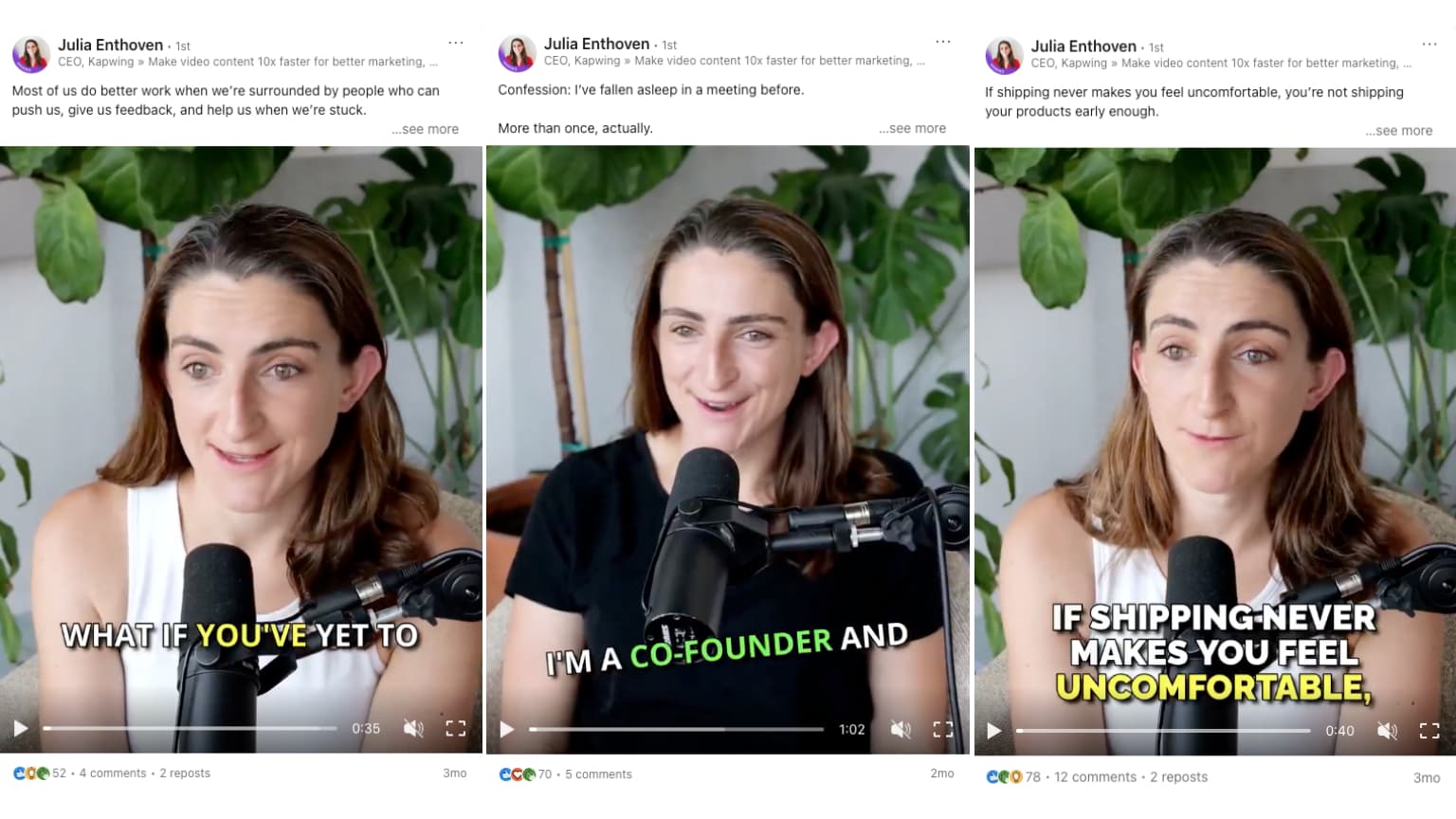
We then make the rest of this process as straightforward as possible by booking a small studio, recording 1-2 hours of her replies to the final talking points, and then handling all of the editing and publishing. You could also apply this approach for other members of your team or even a brand account, but it's one of the best approaches we've found to make a Founder Brand approach work.
Why file this under repurposing? Because the vast majority of the ideas we propose and script are based on internal slides, writeups, and Slack conversations that Julia creates within the company. A leader's job is to make their points of view known; a marketer's job is to know how to package these opinions into content that resonates with customers.
4. Use AI to speed up tedious work
Most content teams we speak to are already using AI for content creation. However, our recent survey on how AI is affecting video production revealed that only 33% of video creators are currently using AI to help them repurpose content.
That's going to change—and fast.
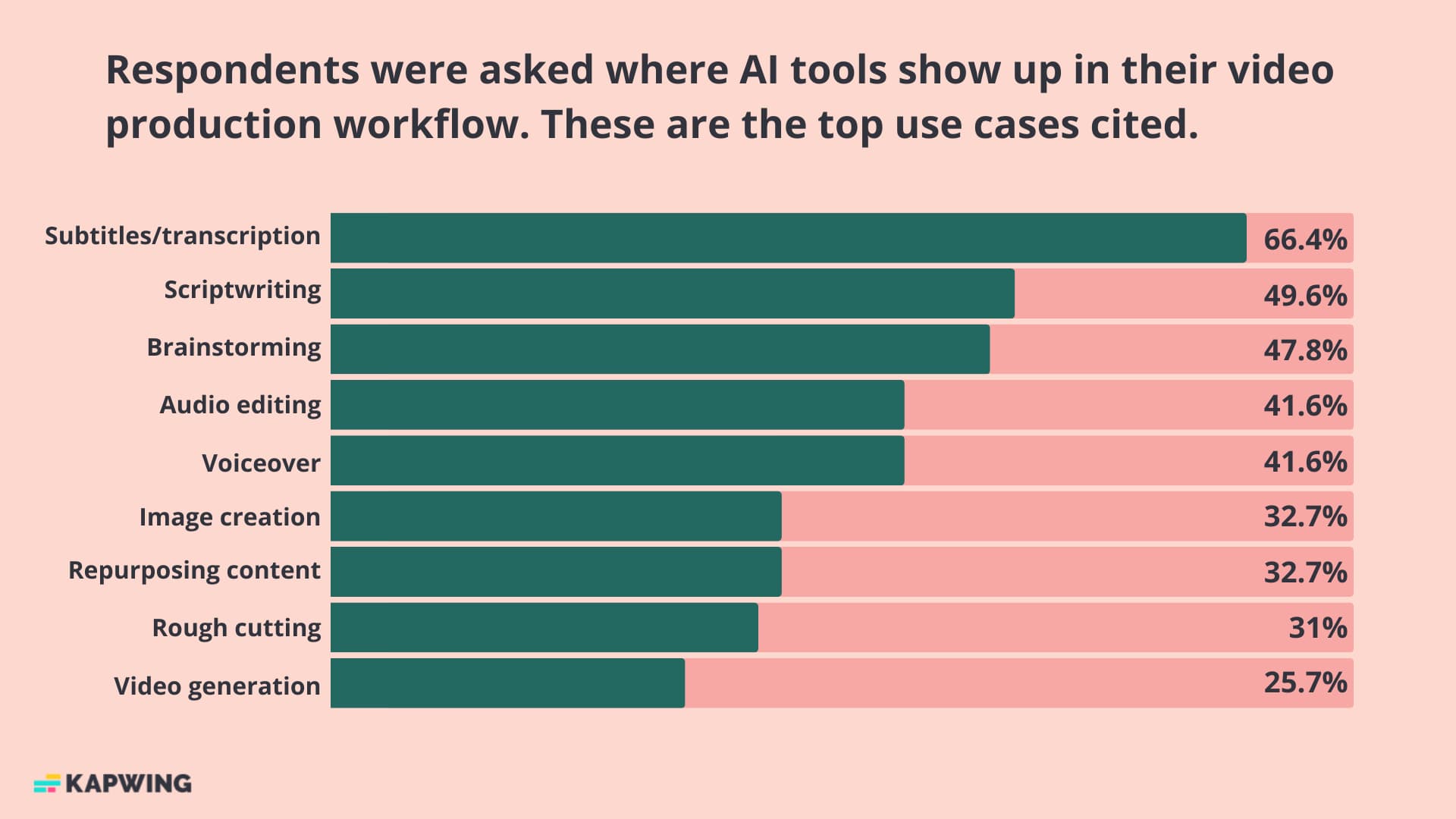
Repurposing is critical for video because video content works so well across nearly every major distribution channel. And although costs to produce video are coming down rapidly, it's going to remain more expensive than other formats—which means extracting the most value possible from each video will remain a top priority for marketing teams.
The problem has always been that repurposing takes lots of time and often feels tedious when compared to high-fidelity editing.
Fortunately, there's good news: AI is genuinely great at speeding up grunt work. We believe AI is poised to dramatically drive down the time required to rework footage for various social and video platforms. AI-suggested clips and text-based editing make it so that rough cuts for repurposed short-form video can be done faster than ever.
Video creators seem to agree. In fact, our survey also showed that the #1 reason why video makers believe AI will help with creativity is that it's useful for automating tedious tasks. This is a core product philosophy behind Repurpose Studio as well—the less time you spend on basic tasks like resizing or subtitles, the more time you have to make creative edits that truly stand out.
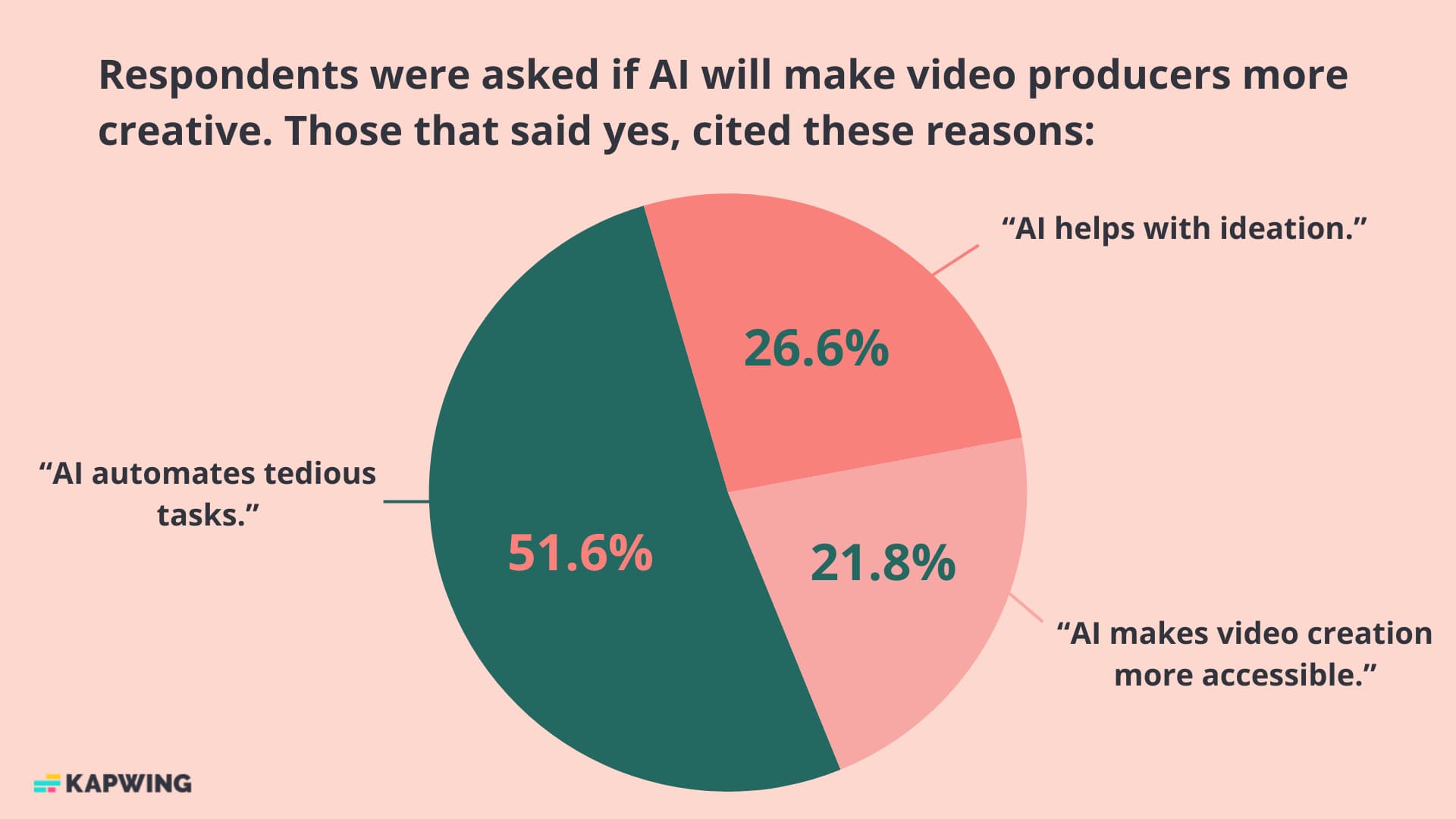
Repurpose with a purpose
Every successful content strategy is tailor-fit to the product, company stage, and market that you operate in. Broad guidance is helpful, but there are few universal truths in marketing—even for something as specific as content repurposing.
But if there's one thing we want you to walk away with, it's this: repurposing only works if it's done with a clear purpose. Remixing your best content can get you off the treadmill, can help you create more impact for each content, and can spread your key messages in a cost-effective way. But it can also quickly become a chaotic and unfocused use of time if there isn't a plan with clear goals in place.
You don't allow "random acts of content" in your content strategy; hold the same standard for repurposed content and you'll go far.
For a further deep dive into escaping the content treadmill through repurposing, check out the full podcast episode on YouTube.
Create content faster with Kapwing's online video editor →


